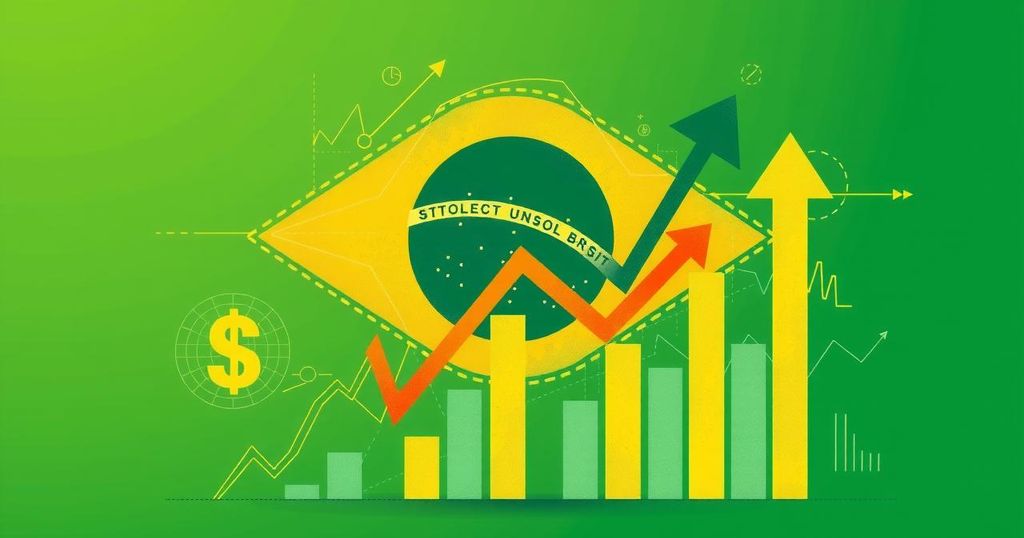Bets on lower interest rates in Brazil are increasing amid economic slowdown discussions. The Central Bank may end monetary tightening sooner than expected, with some managers positioning for declining rates. Various banks predict a potential decrease in the Selic rate, influenced by weaker GDP data, consumer confidence, and global economic conditions.
Amid the ongoing discussions regarding the slowdown of Brazil’s economy, market expectations for lower future interest rates have gained momentum. Recent data on fourth-quarter GDP has amplified this dialogue, indicating that the Central Bank may conclude its current monetary tightening sooner than anticipated. Currently, Brazil’s benchmark Selic rate stands at 13.25%, though some analysts anticipate a potential reduction this year.
Local asset managers, including Legacy Capital, are positioning themselves to benefit from decreasing interest rates. Gustavo Pessoa, a partner at Legacy, emphasized that the significant interest rate differential between Brazil and the rest of the world incentivizes carry trades, while the Selic rate has successfully maintained localized market stability. He projects the Selic rate may peak at 14.75%, allowing for eventual easing of monetary policy as domestic demand slows.
In parallel, other financial institutions and banks are adopting similar forecasts, influenced by weaker-than-expected GDP data, particularly surrounding household consumption. This has prompted some major treasury desks to take short positions against implied inflation and invest in lower interest rates, reinforcing a dovish sentiment that anticipates a terminal interest rate around 15%. Bank of America, for instance, posits that a Selic rate of 15.25% could foster disinflation, creating scope for rate cuts in 2026.
Analysts at Bank of America predict that the Interbank Deposit (DI) rate for January 2031 may decrease from 14.65% to their target of 13.5%. Insights provided by the bank suggest that current high interest rates are likely to dampen aggregate demand and consequently mitigate inflationary pressures as consumer confidence continues to decline.
While opinions vary, financial institutions like Bradesco projects the Selic rate may reach 15.25% by the end of the second quarter but remain at restrictive levels for a prolonged period. Similarly, Natixis indicated that any future rate increases may be less than previously expected due to both local and global economic slowdowns. Deutsche Bank echoes this sentiment, suggesting that high uncertainty could lead to recessionary risks and a potentially weaker dollar, which may influence the Central Bank’s decision to ease rates by the end of the cycle.
In conclusion, as Brazil navigates its economic slowdown, market sentiments increasingly favor the potential for lower interest rates. Analysts and financial institutions are realigning their strategies in response to changing GDP data, focusing on how the Selic rate may shift in the coming years. The interplay of local and global economic factors will continue to shape these expectations, with varying forecasts indicating a cautious yet optimistic outlook for Brazil’s monetary policy.
Original Source: valorinternational.globo.com




